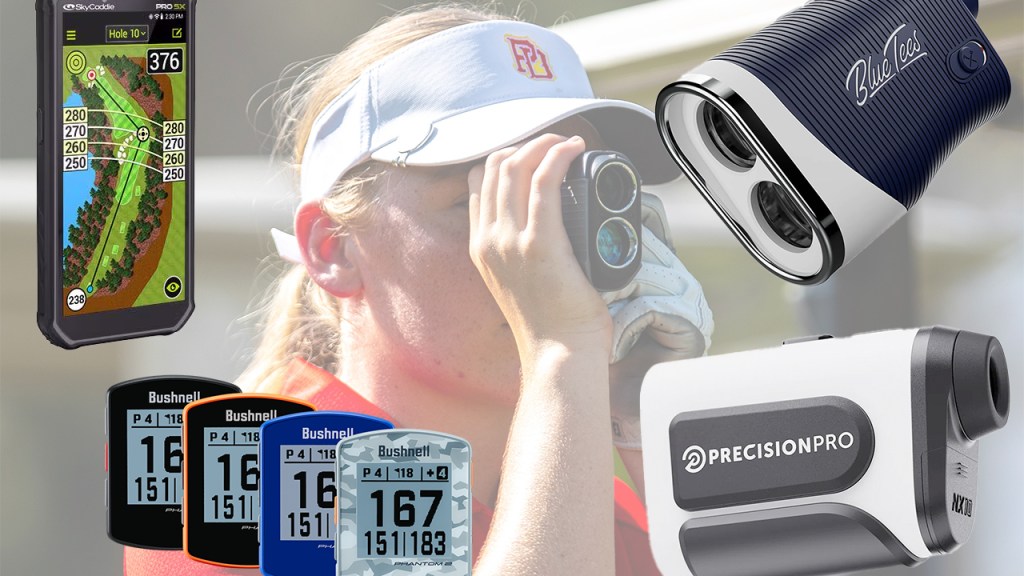Working your way around a golf course can be like solving a puzzle because distances, hazards, and slopes all need to be dealt with in order to piece together a good score. However, two modern pieces of equipment can help make drawing circles instead of squares easier: golf GPS devices and laser rangefinders. While both are designed to provide accurate distance measurements, they do their jobs in different ways, and both have their benefits and drawbacks depending on your style, level of play, and budget.
Golf GPS devices connect to a network of satellites to measure distances to various points on the course, just like the GPS system in your car determines where you are as you drive. By cross-referencing your location with a pre-loaded course map, a GPS device can tell you the distance to the front, middle, and back of the green, as well as any hazards or doglegs along the way. Modern GPS devices now come in the form of watches, handheld units, and even mobile apps that can be downloaded to your smartphone.
There are some distinct advantages to using GPS as your distance-measuring system of choice, and the first is convenience. Whether you opt for a watch, a stand-alone unit, or a smartphone app, golf GPS devices can continuously show you how far away you are from hazards, specific areas on a hole, and different areas of the green. As you move, those numbers automatically update. Golf GPS devices also typically come with other handy features, like the ability to keep your score and manage games you are playing with your partners.
The downside of using a GPS device can be the level of accuracy. The technology that powers GPS devices has improved over the years but can still be off by a couple of yards. There is also a slight chance that a course you play has not been mapped, although most GPS devices come with tens of thousands of courses pre-loaded. Another potential downside is subscription fees, as some higher-end devices require paid subscriptions to unlock all their features.
Pointing a laser rangefinder at your target and then pressing a button shoots a beam of light out of the unit. Then, measuring how long it takes that laser beam to reflect back to the device, it calculates the distance. Laser rangefinders are the most accurate way to measure the distance between you and your target, accurate to within a yard from farther out than most golfers can hit a golf ball. They also never have to worry about whether a golf course has been mapped when you use a laser rangefinder.
Laser rangefinders can’t measure what they can’t see, so you need to be able to see your target to make them work, and they can struggle in rainy or foggy conditions. Holding the unit steady enough to hit your target can be challenging for golfers with unsteady hands, making laser rangefinders frustrating to use. Your decision on whether to use a golf GPS device or a laser rangefinder ultimately depends on your playing style and preferences. If you prefer quick, comprehensive information and hazard management, a golf GPS could be a solid choice. If you are an elite golfer or require the highest level of accuracy, a laser rangefinder could be the way to go.


